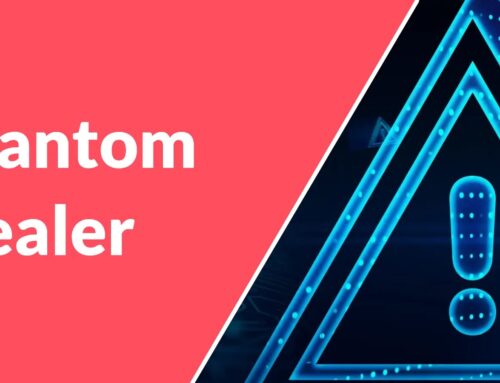
10 Best Vulnerability Management Tools In 2025
# The Essential Guide to Vulnerability Management Tools: Protecting Your Cybersecurity Landscape
**Table of Contents:**
1. Introduction
2. Understanding Vulnerability Management
3. Key Features of Effective Vulnerability Management Tools
4. Top Vulnerability Management Tools in 2023
5. Benefits of Implementing Vulnerability Management Tools
6. Best Practices for Utilizing Vulnerability Management Tools
7. Conclusion
—
## 1. Introduction
In today’s increasingly digital landscape, the security of sensitive data has never been more critical. Vulnerability management tools play a fundamental role in protecting businesses from cyber threats. This blog aims to provide you with comprehensive insights into the best vulnerability management tools available and how they can help safeguard your organization’s digital assets.
## 2. Understanding Vulnerability Management
Vulnerability management is the process of identifying, assessing, and prioritizing vulnerabilities in software and hardware systems. By continuously monitoring and mitigating potential weaknesses, organizations can reduce their risk of data breaches, malware infections, and other cybersecurity incidents. The need for effective vulnerability management cannot be overstated, as cyber threats evolve at a rapid pace.
### Key Takeaway:
Vulnerability management is vital in protecting an organization’s digital assets by proactively identifying and addressing potential weaknesses.
## 3. Key Features of Effective Vulnerability Management Tools
When selecting a vulnerability management tool, consider the following key features that can enhance its effectiveness:
– **Automated Scanning:** Automatically identify vulnerabilities in your systems, which saves time and reduces the chances of human error.
– **Threat Intelligence Integration:** Leverage real-time threat intelligence to prioritize vulnerabilities based on their current exploitability and potential impact.
– **Reporting and Analytics:** Generate comprehensive reports that provide insights into vulnerabilities, mitigation measures, and compliance status.
– **Remediation Recommendations:** Guidance on how to rectify vulnerabilities, ensuring effective risk management.
– **Integration Capabilities:** Ability to integrate with other security tools, creating a holistic security ecosystem.
### Key Takeaway:
Choosing tools that feature automation, threat intelligence, and robust reporting can significantly improve the efficiency of your vulnerability management efforts.
## 4. Top Vulnerability Management Tools in 2023
2023 has brought forth several cutting-edge vulnerability management tools. Here are some of the top performers:
– **Qualys:** A cloud-based vulnerability management platform known for real-time visibility and various integration capabilities.
– **Tenable.io:** Offers powerful analytics and continuous visibility, making it easy to track vulnerabilities across assets.
– **Rapid7 InsightVM:** Features advanced threat detection and prioritization capabilities, leveraging data from the broader security landscape.
– **Nessus:** One of the most well-known vulnerability assessment tools, providing extensive scanning capabilities and deep insights.
### Key Takeaway:
Explore top players like Qualys, Tenable.io, Rapid7, and Nessus to find the right vulnerability management tool tailored for your organization’s unique needs.
## 5. Benefits of Implementing Vulnerability Management Tools
The advantages of using vulnerability management tools are numerous:
1. **Enhanced Security Posture:** Continuous monitoring helps organizations stay ahead of potential threats.
2. **Reduced Risk of Data Breaches:** Proactive vulnerability management minimizes the likelihood of exploitation.
3. **Compliance Assurance:** Regularly identifying and addressing vulnerabilities aids in complying with industry regulations and standards.
4. **Improved Resource Efficiency:** Automation reduces time spent on manual checks, allowing teams to allocate resources to other crucial tasks.
### Key Takeaway:
Investing in vulnerability management tools not only enhances security but also streamlines compliance and improves overall efficiency.
## 6. Best Practices for Utilizing Vulnerability Management Tools
To maximize the effectiveness of your vulnerability management tools, consider these best practices:
– **Regular Scanning:** Schedule automated scans regularly to ensure vulnerabilities are identified and dealt with promptly.
– **Prioritize Vulnerabilities:** Utilize risk scoring mechanisms to focus on the most critical vulnerabilities first.
– **Keep Software Updated:** Ensure that all systems and applications are kept up to date to minimize potential vulnerabilities.
– **Educate Employees:** Foster a culture of cybersecurity awareness among employees to prevent successful exploitation attempts.
### Key Takeaway:
Implementing regular scans, prioritization of vulnerabilities, and employee education can drastically improve your organization’s vulnerability management efforts.
## 7. Conclusion
In an era where digital threats are rampant, an effective vulnerability management strategy is essential for organizations of all sizes. By adopting the right tools and employing best practices, you can significantly enhance your cybersecurity posture, reduce risks, and create a more secure environment for your data and operations. Stay vigilant, stay updated, and invest in effective vulnerability management tools to safeguard your organization against emerging cyber threats.
—
**Final Thought:** The importance of vulnerability management tools in today’s cybersecurity landscape cannot be overstated. By understanding the features, benefits, and best practices associated with these tools, you can ensure your organization remains protected against potential threats. Start your journey towards a more secure digital environment today!





